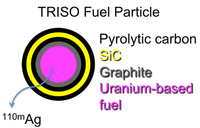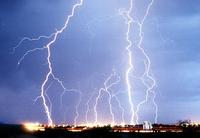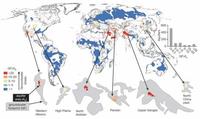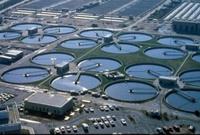-
Robust fourth-generation nuclear fuel withstands high-temperature accident conditions

A safer and more efficient nuclear fuel is on the horizon. A team of researchers at the U.S. Department of Energy’s Idaho National Laboratory (INL) and Oak Ridge National Laboratory (ORNL) have reached a new milestone with tristructural-isotropic (TRISO) fuel, showing that this fourth-generation reactor fuel might be even more robust than previously thought.
-
-
U.S. nuclear power industry facing dire prospects
The U.S. nuclear industry is facing several daunting challenges, with industry experts concluding that it may well be an energy source of the past. New construction of nuclear plants has come to a halt, older nuclear plants are closing, and plant expansions are put on hold. The main culprits: the price of natural gas is dropping fast because of new resources becoming available as a result of fracking, and wind and solar are making steady, if slow, gains.
-
-
How Sandy has changed storm warning procedures
Superstorm Sandy slammed against the U.S. Eastern Seaboard in October 2012, inundating iconic communities. Those communities have been rebuilding since then and things are almost back to normal for most. Something else, however, has had to be rebuilt as well: the structured procedures for issuing warnings. The goal is to help communities better comprehend what natural disasters will bring their doorsteps.
-
-
Fracking in Ohio: tapping a valuable resource or invading the environment?
A new study is examining methane and other components in groundwater wells, in advance of drilling for shale gas which is expected over the next several years in an Ohio region. A team of researchers spent a year doing periodic testing of groundwater wells in Carroll County, Ohio, a section of Ohio that sits along the shale-rich Pennsylvania-West Virginia borders. The study analyzed twenty-five groundwater wells at varying distances from proposed fracking sites in the rural, Appalachian, Utica Shale region of Carroll County.
-
-
Fracking does not cause quakes, but disposing water used in the process might: scientists
Researchers say that human activity associated with oil and gas production may sometimes cause earthquakes, but the problem lies in the disposal of drilling fluids in the underground injection wells, not hydraulic fracturing. The vast majority of injection wells do not cause quakes.
-
-
U.S. to face an increased risk of severe thunderstorms

Severe thunderstorms, often exhibiting destructive rainfall, hail and tornadoes, are one of the primary causes of catastrophic losses in the United States. In 2012, eleven weather disasters in the United States crossed the billion-dollar threshold in economic losses. Seven of those events were related to severe thunderstorms. New climate analyses indicate that global warming is likely to cause a robust increase in the conditions that produce these types of storms across much of the country over the next century.
-
-
Calculating emissions, costs of increased wind, solar in the West
New research quantifies the potential impacts of increasing wind and solar power generation on the operators of fossil-fueled power plants in the West. To accommodate higher amounts of wind and solar power on the electric grid, utilities must ramp down and ramp up or stop and start conventional generators more frequently to provide reliable power for their customers — a practice called cycling.
-
-
Los Alamos National Lab describes storm damage to affected New Mexico areas
Hours after a disaster declaration by Los Alamos County, Los Alamos National Laboratory officials on Friday described “millions” of dollars in damage to environmental monitoring stations, monitoring wells, access roads, and badly eroded canyon bottoms. “Last week we experienced an epic event,” said Dave McInroy, the laboratory’s program director for environmental corrective actions.
-
-
“In 30 years Iran will be a ghost town” if the country’s water situation does not improve

Issa Kalantari, a former agriculture minister during the presidency of Ayatollah Hashemi Rafsanjani and currently and advisor to President Hassan Rouhani’s cabinet, says Iran’s water crisis was especially grave. “Our main problem that threatens us, that is more dangerous than Israel, America or political fighting, is the issue of living in Iran. It is that the Iranian plateau is becoming uninhabitable”; “If this situation is not reformed, in 30 years Iran will be a ghost town.”
-
-
Deep earthquakes simulated in the laboratory
More than twenty years ago, researchers discovered a high-pressure failure mechanism that they proposed then was the long-sought mechanism of very deep earthquakes (earthquakes occurring at more than 400 km depth). The result was controversial because seismologists could not find a seismic signal in the Earth that could confirm the results. Seismologists have now found the critical evidence. Indeed, beneath Japan, they have even imaged the tell-tale evidence and showed that it coincides with the locations of deep earthquakes.
-
-
Missed opportunities to save water, energy
Water and wastewater managers are missing substantial opportunities to save energy and money, according to a new report.The report also identifies significant gaps in knowledge about the amount of water used to extract energy resources such as natural gas, oil, and coal, and to generate electricity.
-
-
NIST announces five grants to pilot Trusted Identity technologies
The National Institute of Standards and Technology (NIST) has announced more than $7 million in grants to five organizations to fund pilot projects as part of the government’s National Strategy for Trusted Identities in Cyberspace (NSTIC) initiative. The NSTIC initiative is a collaborative effort among the private sector, advocacy groups and public-sector agencies to support technologies that enable individuals and organizations to use secure, efficient, convenient and interoperable identity credentials to access online services in a way that promotes confidence, privacy, choice and innovation.
-
-
Improving nuclear waste repositories

How fast will iodine-129 released from spent nuclear fuel move through a deep, clay-based geological repository? Understanding this process is crucial. Countries worldwide consider underground clay formations for nuclear waste disposal because clay offers low permeability and high radionuclide retention. Even when a repository is not sited in clay, engineered barriers often include a compacted buffer of bentonite, a common type of clay, to improve waste isolation.
-
-
Demonstrating bioenergy technology

Researchers plan to demonstrate an innovative bioenergy technology that converts wastewater treatment plant byproducts into hydrogen gas to produce electricity. The demonstration project will start in mid-October, and in about a year the wastewater treatment plant will be processing one ton per day of wet biosolids and will be producing up to thirty kilowatts of electricity. The electricity, in turn, will be used to power select functions at the plant.
-
-
California mulls costly earthquake early-warning system
The price of an early warning system which would alert California officials about an earthquake within sixty seconds before a major temblor strikes would be $80 million. The California legislature passed a bill on 13 September, requiring the state to develop the earthquake warning system, but it is unclear whether Governor Jerry Brown will sign the bill.
-
More headlines
The long view
Water Wars: A Historic Agreement Between Mexico and US Is Ramping Up Border Tension
As climate change drives rising temperatures and changes in rainfall, Mexico and the US are in the middle of a conflict over water, putting an additional strain on their relationship. Partly due to constant droughts, Mexico has struggled to maintain its water deliveries for much of the last 25 years, deliveries to which it is obligated by a 1944 water-sharing agreement between the two countries.
Trump Is Fast-Tracking New Coal Mines — Even When They Don’t Make Economic Sense
In Appalachian Tennessee, mines shut down and couldn’t pay their debts. Now a new one is opening under the guise of an “energy emergency.”
Smaller Nuclear Reactors Spark Renewed Interest in a Once-Shunned Energy Source
In the past two years, half the states have taken action to promote nuclear power, from creating nuclear task forces to integrating nuclear into long-term energy plans.
Keeping the Lights on with Nuclear Waste: Radiochemistry Transforms Nuclear Waste into Strategic Materials
How UNLV radiochemistry is pioneering the future of energy in the Southwest by salvaging strategic materials from nuclear dumps –and making it safe.
Model Predicts Long-Term Effects of Nuclear Waste on Underground Disposal Systems
The simulations matched results from an underground lab experiment in Switzerland, suggesting modeling could be used to validate the safety of nuclear disposal sites.
